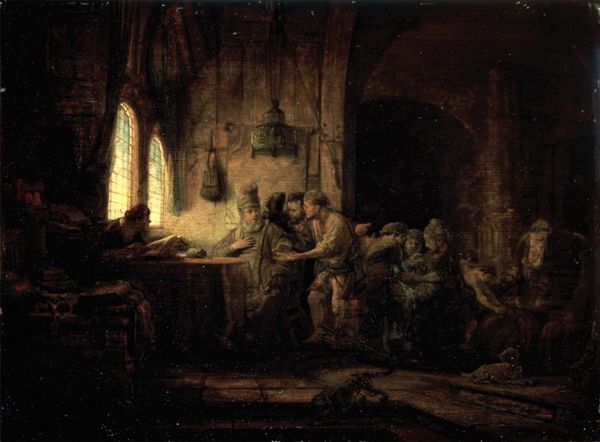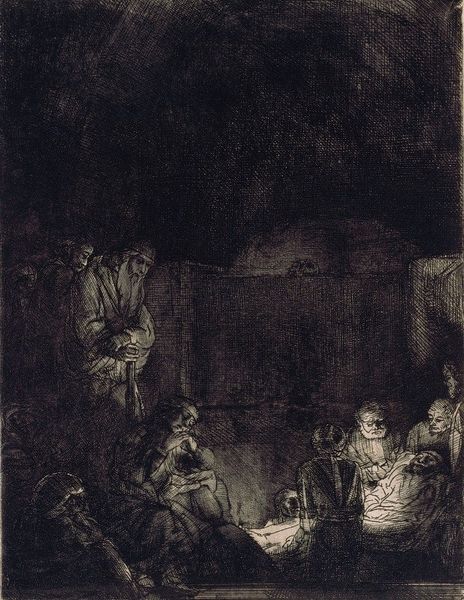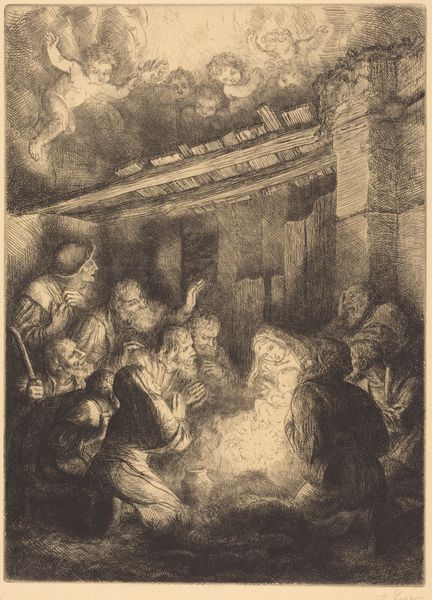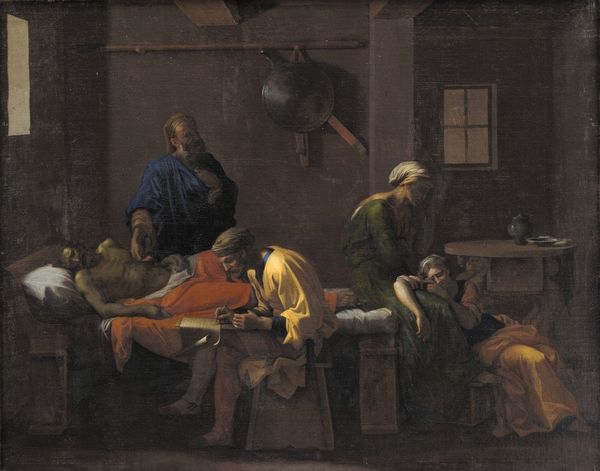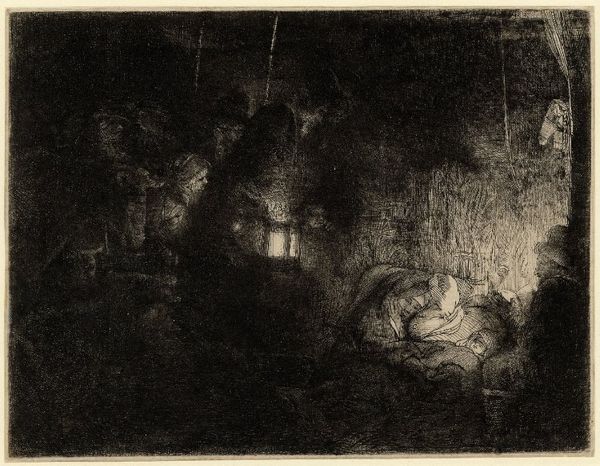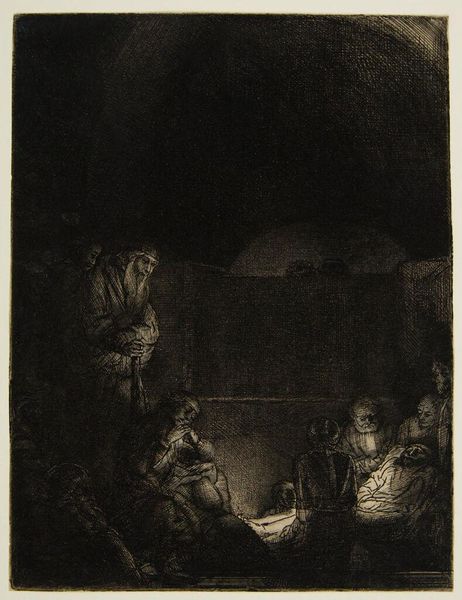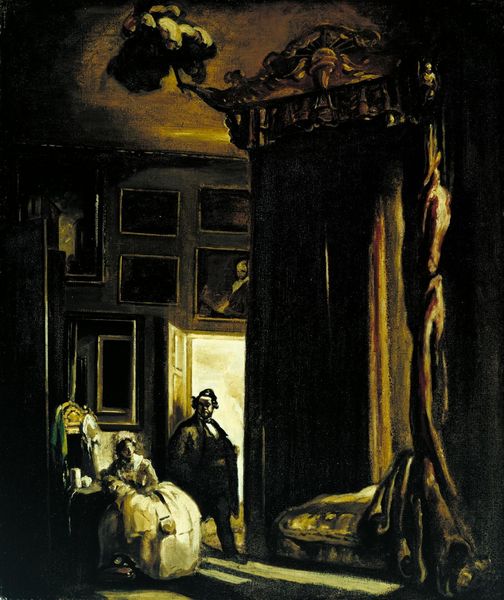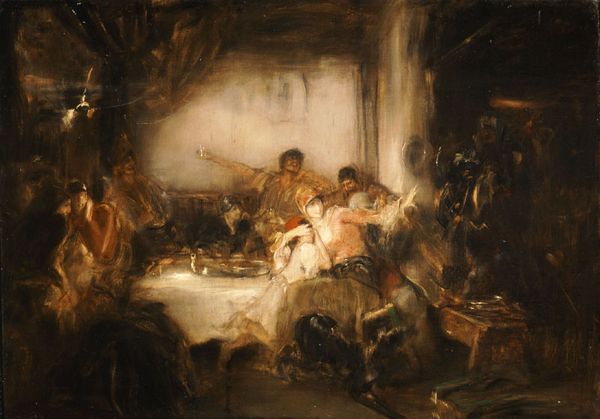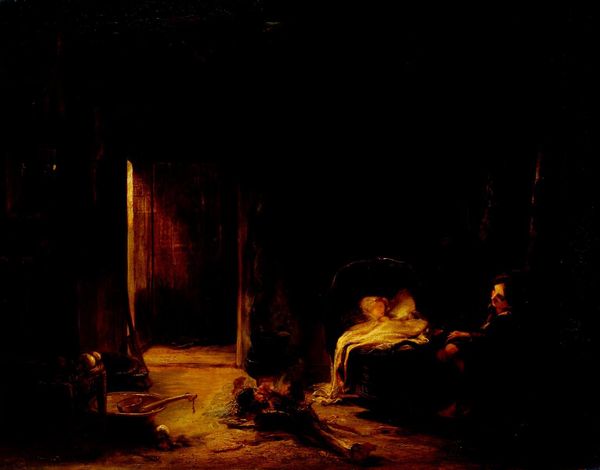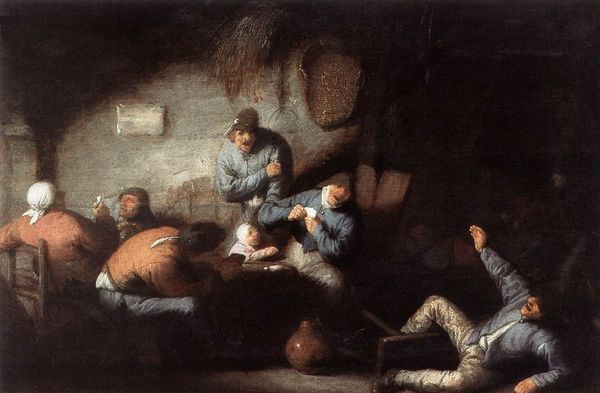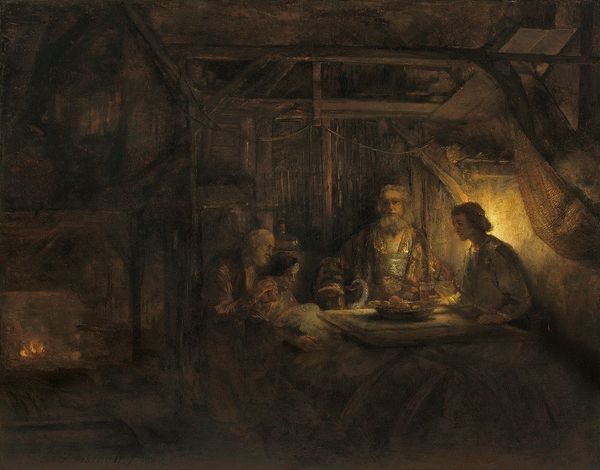
painting, oil-paint
#
portrait
#
painting
#
death
#
oil-paint
#
11_renaissance
#
flemish
#
christianity
#
history-painting
#
northern-renaissance
#
virgin-mary
#
christ
Dimensions: 36 x 55 cm
Copyright: Public domain
Curator: This oil-on-panel work is Pieter Bruegel the Elder's "The Death of the Virgin," painted in 1564. Editor: It feels almost claustrophobic, doesn’t it? The heavy use of chiaroscuro gives it such a solemn, enclosed feeling. Like we’re intruding on a very private moment. Curator: The composition is fascinating when viewed through a gendered lens. Consider the historical context of the late Renaissance, where female experiences were often silenced or rendered invisible. Editor: I notice how all the figures seem to be orbiting the central form of the Virgin, herself rendered as quite aged in accordance with orthodox iconic types. Are there any cues about her status, or indications of the divine within? Curator: Indeed. Bruegel situates the Virgin within the communal space, yet he presents a domestic, distinctly human portrayal of grief, offering viewers a potential model for navigating bereavement during a period of widespread social upheaval, where plagues spread death indiscriminately. I would point out how most mourners here are women. Editor: Yes! And they're presented with an almost uniform stillness, a reverence. The subdued palette reinforces the somber, deeply internalized atmosphere. I wonder about the singular light source. Is it natural, divine? Curator: Consider how light and shadow could symbolically denote not only holiness, but knowledge and power, and the subtle ways these may have been subtly influenced through the Council of Trent— Editor: Or simply to highlight the humanity within divinity. Light as warmth, light as the final breath. It all loops back into cyclicality. What really strikes me is how the universality of grief is made intensely intimate here. Curator: Absolutely. The piece becomes a quiet space to consider death, grief, gendered expression, and class within the sweeping changes of 16th-century Europe. Editor: It certainly resonates across centuries as a reminder of our shared human experiences. Curator: It highlights art as a vital participant in the ongoing process of shaping our culture. Editor: It serves as a cultural meditation—something both delicate and universal in its symbolic rendering of death.
Comments
No comments
Be the first to comment and join the conversation on the ultimate creative platform.
